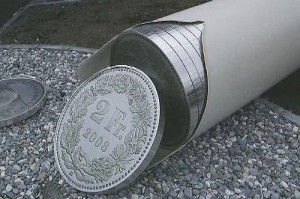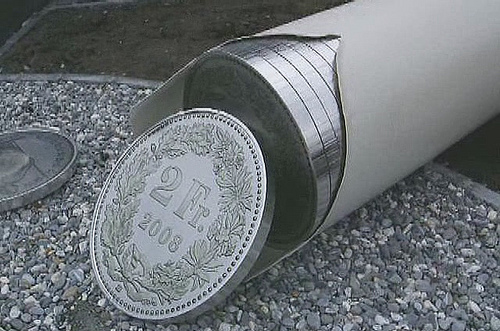 On 15th January, the Swiss central bank (SNB) shocked global markets by removing the cap on its currency, the Franc, which it had put into effect against the euro at 1.20 francs more than three years earlier. Since the SNB had reaffirmed its commitment to keeping the cap in place shortly before its removal, markets reacted violently to the news, with at least 2 foreign exchange brokerage firms declaring insolvency in the ensuing 24 hours.
On 15th January, the Swiss central bank (SNB) shocked global markets by removing the cap on its currency, the Franc, which it had put into effect against the euro at 1.20 francs more than three years earlier. Since the SNB had reaffirmed its commitment to keeping the cap in place shortly before its removal, markets reacted violently to the news, with at least 2 foreign exchange brokerage firms declaring insolvency in the ensuing 24 hours.
In an attempt to offset the impact of this measure, the SNB also cut interest rates on sight deposits (deposits that can be withdrawn from banks at any time, without penalty) by 0.5% to -0.75%. This move effectively triples the cost to lenders of placing funds with the central bank.
On the same day the cap was removed, the franc soared by 30% against the euro, breaking past parity to trade at 0.8052 francs before those gains were pared to 1.0350 by the close. The Swiss currency also rocketed against the US dollar, gaining 25% to trade at 0.89 francs, before ending the week 15% higher. As of market close on 21st January, the franc traded near parity and 1.16 against the euro and dollar respectively.
The SNB imposed the cap in September 2011 as a response to the eurozone’s debt crisis, creating an influx of investors to ‘safe-haven’ Swiss assets. The intent of this cap was to control the currency’s appreciation and protect Swiss exporters, whose goods and services were consequently becoming more expensive overseas.
The euro’s value has been declining for quite some time and recently hit an 11-year low against the US dollar. To maintain the peg to the euro, the SNB printed more currency to buy euros, which caused the franc to depreciate – it lost 12% against the dollar in 2014.
The European Central Bank is expected to adopt a quantitative easing program shortly, which will create money to buy eurozone government debt and is therefore very likely to cause the euro to weaken further. This would require the SNB to print even more francs to maintain the cap and add to its huge existing sums of foreign exchange reserves, which had already risen in 2014 to $480bn, or 70% of its GDP. Given that demand for francs was also rising as funds from the beleaguered eurozone and Russian economies entered, the upward pressure on the cap made its imposition increasingly difficult to justify. The cap was therefore removed.
The appreciation in the franc since the cap’s removal has hit the country’s exporters, such as watch manufacturers and the tourist industry. The value of exporters’ shares plummeted following the SNB’s announcement, with prices for Swiss goods abroad rising by 20% overnight. Juerg Schmid, head of Swiss Tourism, described the SNB’s decision as “brutal.” Switzerland exports approximately 56% of its goods to European countries.
The expected impact on central and eastern European homeowners will also be of concern. Approximately 566,000 Poles have taken out mortgages denominated in Swiss francs. Almost 50% of Polish mortgages are in foreign currencies, and of those housing loans, 80% are franc-denominated.
Swiss consumers, however, have benefitted by the increased spending power of the franc. Shoppers are expected to pour across the Swiss border for cheaper goods in neighbouring eurozone countries.
UBS immediately lowered its forecast for Switzerland’s economic growth in 2015 from 1.8% to 0.5% due to the “substantial impact” of the stronger franc. This suggests that the franc is expected to remain strong throughout the year. The Swiss bank expects that exporters and tourism will feel the worst of the impact, as well as retailers near borders with neighbouring eurozone countries. UBS also predicts that the eurozone’s economy will recover in the second half of this year, which should help Swiss exporters, although it expects exports this year to fall by 1.0% from 2014. Serge Gaillard, head of the Swiss Federal Finance Administration, also believes that if the franc remains at around parity with the euro, the Swiss economy will “radically” worsen, although he does not envisage a recession.
Deflation is another potential outcome of the franc’s strength, given that prices in Switzerland were already falling marginally and the franc’s appreciation has made imports cheaper. This could hamper economic growth, as consumers end up delaying spending with the view that cheaper prices can be obtained further in the future.
Eveline Widmer-Schlumpf, Switzerland’s Finance Minister, supports the SNB’s decision, believing that Swiss businesses “will handle the situation.” However, she is uncertain on whether business tax cuts will be required in the future to counter the franc’s appreciation.

